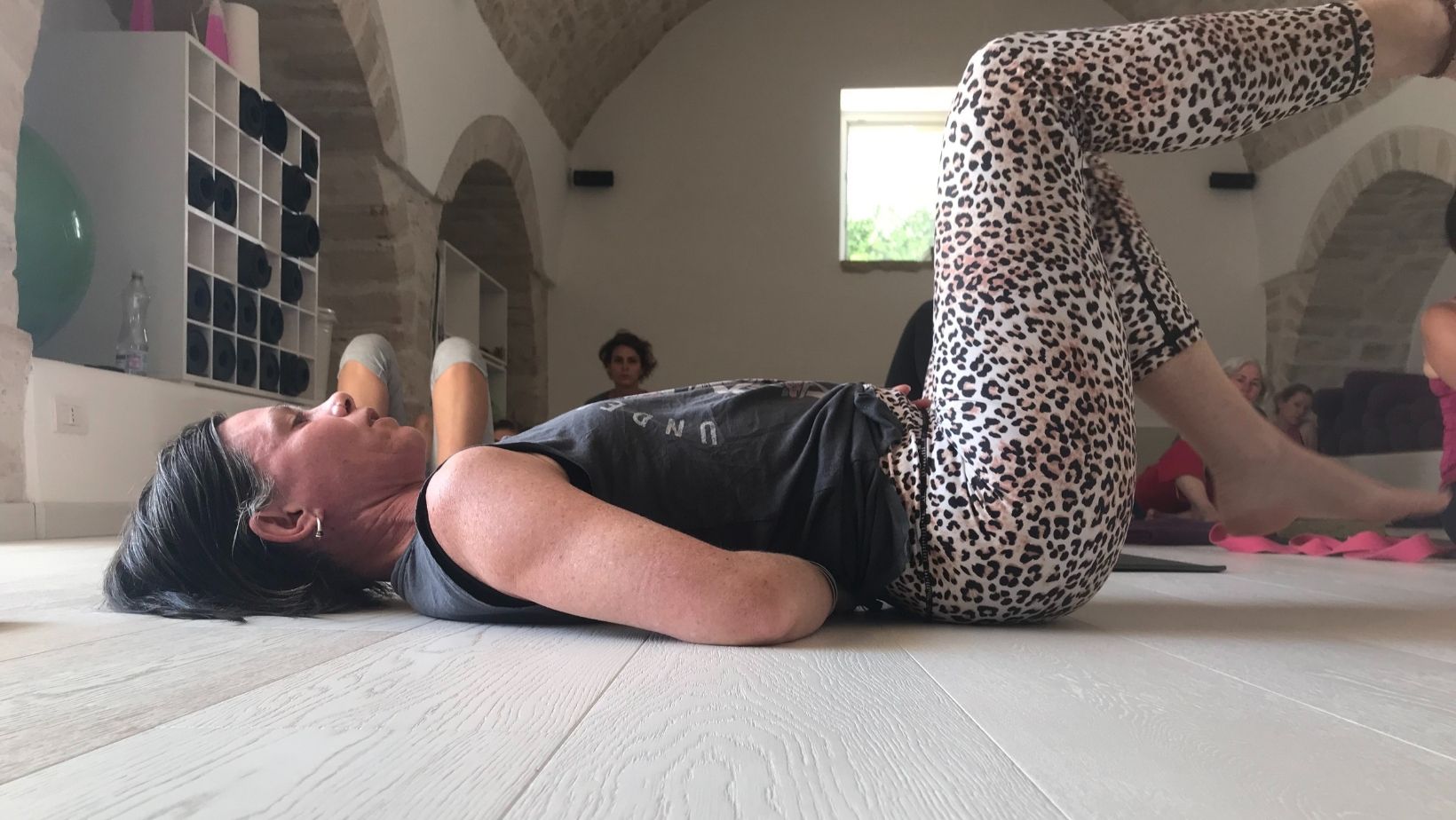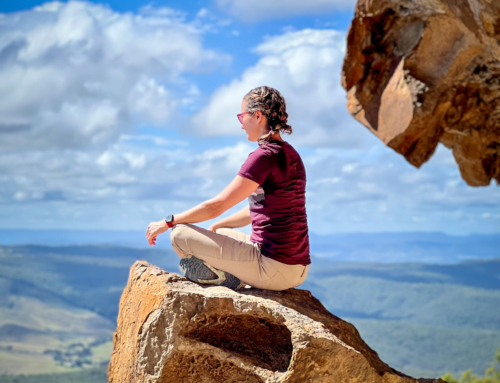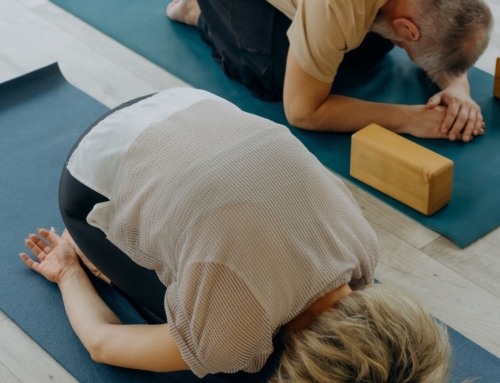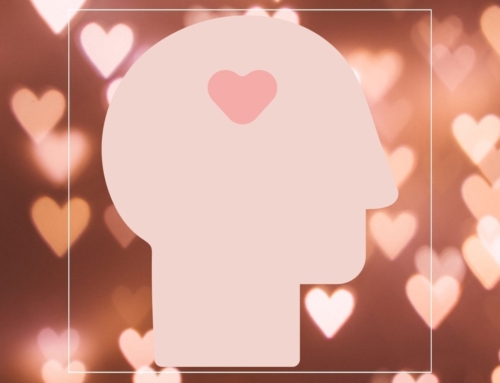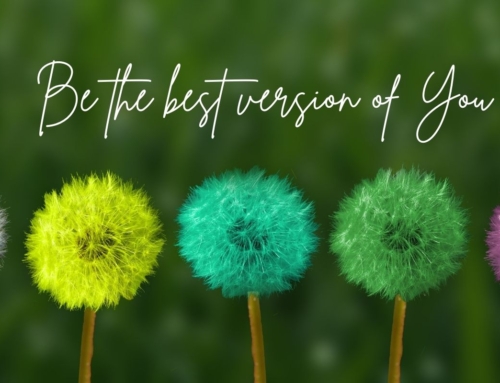This process of feeling into your body helps you to become sensitive to your pain signals which are your body’s way of calling you to look deeper, and more than just the physical but also into the psychosomatics of your problem.
Your emotions, thoughts and beliefs have a huge impact on our physical body. Listening and holding space for these also can act as a catalyst for change and healing.
It is always recommended to firstly seek advice specificly to your needs. With the right guidance from a good yoga teacher yoga softly bringing your awareness back to find ease. Below will give you an idea of how yoga can assist.
Physiotherapist and Yoga Teacher Tamara James is proving with specific movements suited to your individual needs, Yoga can drastically improve and alleviates chronic back pain. Learn more here

Three Ways to Release Stuck Emotions and Heal Back Pain
Some suggestive practices to support further releases of the lower back.
 Physical. 1. Resting in a child’s pose allows your lower back to open and continue to release what is being held there. You may need to lay over a bolster or put support under knees and ankles for more comfort.
Physical. 1. Resting in a child’s pose allows your lower back to open and continue to release what is being held there. You may need to lay over a bolster or put support under knees and ankles for more comfort.
2. You can also lay on your back, extending one leg long and pulling the other leg toward your chest. Do this with both sides and then pull both knees in together, gently rocking your body and sending compassion and kindness to your lower back.
Affirmations. As you move through poses to release your back, it is helpful to create an affirmation that supports your intention. “I am able to move forward with my life without fear of financial worry,” and “I am open and available to heal from the deepest depths of my being now” are two statements that speak most directly to the psychosomatics of lower backs.
 Meditation. A clearing, releasing, and protecting meditation for the entire back. In this meditation, settle into a child’s pose and imagine your back being fully exposed and open. It’s helpful to feel into a part of you that is softer and kinder to help stay in a state of total compassion and care.
Meditation. A clearing, releasing, and protecting meditation for the entire back. In this meditation, settle into a child’s pose and imagine your back being fully exposed and open. It’s helpful to feel into a part of you that is softer and kinder to help stay in a state of total compassion and care.
As you breathe in, feel the intentions from the above or a more fitting affirmation to fill your back. As you breathe out, visualise any tension, sadness, shame, and fears releasing out. In the continual flow of your breath feel your back opening like shutters so lots of compassion, love, and light can penetrate in. Sitting with the warmth of the sun on your back could feel really nice. Continue breathing until you feel your energy is clear and clean.
By accessing these deeper places of healing, being present and listening to your body’s messages, and accepting their release, you can find a way to move through and beyond the pain that may have been with you for many years. It is through the muscle/mind connection that the emotions that are stored are able to be moved and released

Conquer your fears (or at least look into them). Fear is one of the root causes of back pain (especially of the low back). Fear is associated with problems of the root chakra. Whether it is personal insecurities, fear of not making enough money or even fear of failure, it can all be creating back pain. Once you stare your fears in the face, you will realize that they are creations of the mind that can be overcome—by growing a “backbone”.
Process your emotions. Pain in the back usually represents repressed emotions from the past. Once you are able to acknowledge and process your emotions, the closer you are to healing. One of the best ways to move through tough emotions is by journaling. It helps to privately lay out things that are bothering you, by becoming more conscious of your thoughts and feelings. It’s a way to better understand and work through sadness, rage, guilt, fear, anger and any other emotions that are often hard to talk about with others.
Try these yoga asanas.
 Cobra pose (Bhujangasana)
Cobra pose (Bhujangasana)
- Lie down on your abdomen and point your feet behind you.
- Place your hands on the ground under your shoulders.
- Engage your buttocks and keep your legs straight and pressed together.
- Lift your chest up off the ground by using the strength of your back.
- Gaze upward, lengthen your spine and keep your abdominals engaged.
 Modified bridge pose (Setu Bandha Sarvangasana)
Modified bridge pose (Setu Bandha Sarvangasana)
- Lying on your back, bend your knees, with feet flat on the floor hip-width apart and parallel.
- Keep arms to the side of your body with palms facing the floor for stability.
- Exhale and slowly lift your hips toward the ceiling, keeping the knees and thighs parallel.
- Lift the hips until the body is flat from chest to knees.
- Keep the neck soft by lifting the chin away from the body.
- Maintain the pose for one minute.
- Exhale and slowly roll the spine dow
n starting from the neck and ending at the hips, one vertebra at a time. - Repeat the pose once more.

Downward-Facing Dog (Adho Mukha Svanasana)
Start on your hands and knees, with your hands slightly in front of your shoulders.![]()
- Press back and raise your knees away from the floor and lift your tailbone up toward the ceiling.
- Gently push your heels toward the floor.
- Hold the position for 5 to 10 breaths, and repeat the pose about 5 times.

Cat & Cow Pose (Bitilasana & Marjaryasana)
- Start on an all-fours with hands under shoulders and knees under hips.
- Move into cat pose by slowly pressing your spine up and arching your back up to the sky. Draw your navel up toward your spine.
- Hold for a few seconds and then move to cow by slowly bowing your spine down, pressing your shoulder blades back and lifting your head. Moving back and forth slowly from cat to cow helps promote flexibility and mobility in the spine while relaxing the muscles and easing tension.
- Repeat 5-10 times.
 Two-Knee Twist (Supta Matsyendrasana)
Two-Knee Twist (Supta Matsyendrasana)
- Lying on your back, bend your knees into your chest and bring your arms out to your sides in a ‘T.’
- As you exhale, slowly lower your knees to the ground on the right. Keep both shoulders pressing down firmly on the ground. If the left shoulder lifts, bring your knees back toward the center a bit.
- Keep your core engaged to protect the l
ow back. - Hold for 1-2 minutes each side

Locust Pose (Salabhasana)
- Lie on your belly with your arms along the sides of your torso, palms up, forehead resting on the floor.
- Firm your buttocks.
- Exhale and lift your head, upper torso, arms, and legs away from the floor. Resting on the center of your belly, reach strongly through your legs, heels and through the bases of the big toes.
- Raise your arms parallel to the floor and stretch back actively through your fingertips.
- Press your scapulas firmly into your back.
- Gaze slightly upward, being careful not to jut your chin forward and crunch the back of your neck. Keep the base of the skull lifted and the back of the neck long.
- Stay for 30 seconds to 1 minute, then release with an exhalation. Take a few breaths and repeat 1 to 2 more times if it feels right.

